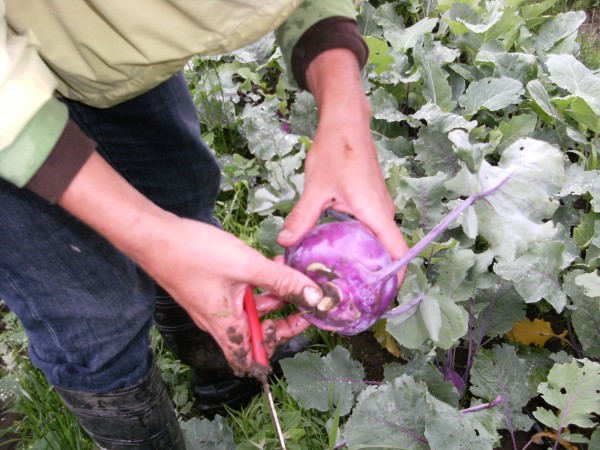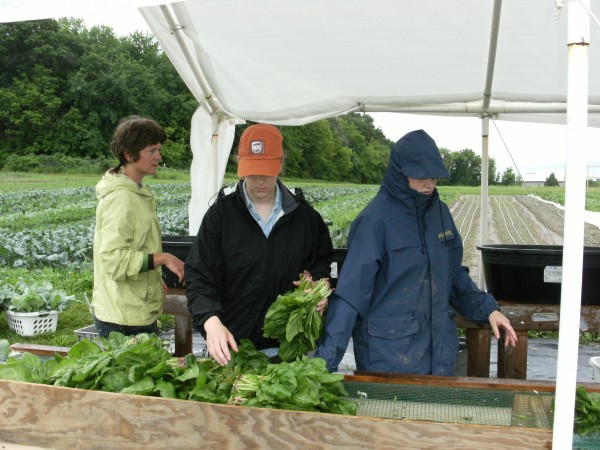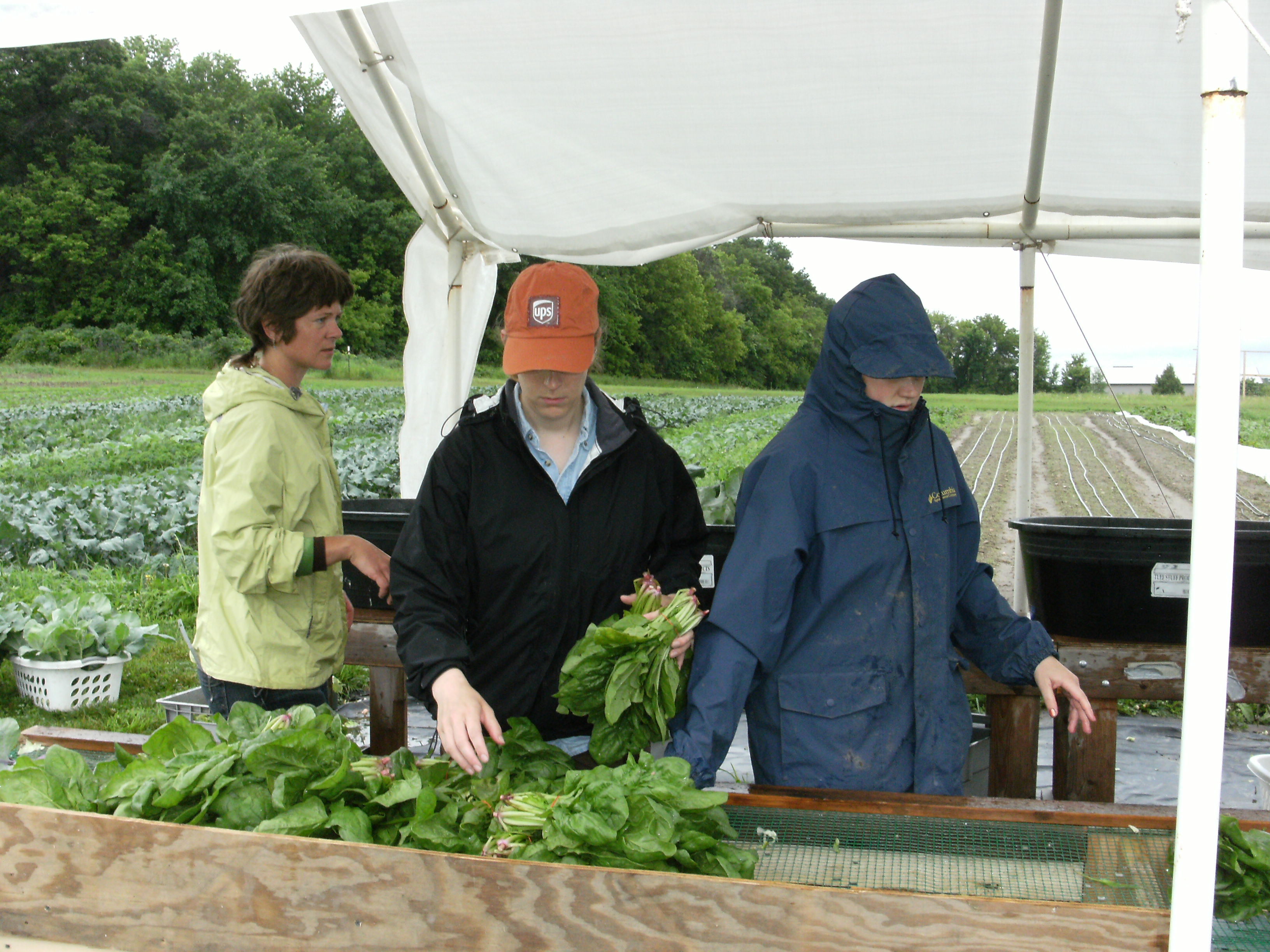University of Minnesota Agriculture student Ruth Burke is spending this summer interning at a CSA farm called Cramer Organics of Delano, MN. Throughout the growing season, she’ll share weekly updates about the experience with readers of the Heavy Table.
Part 7: “The Real Dirt”
When you walk into a grocery store nowadays and peruse the produce section, you probably won’t see much insect damage or dirt on the vegetables and fruit — at least, not the commercially grown produce. However, take a look at the organic produce, and you might notice a distinct difference. While most wholesale organic produce (that sold in supermarkets or co-ops) is quite comparable to commercially grown produce, you might still see some blemishes that would not be acceptable with non-organic products. If you purchase directly from a CSA, your vegetables might be a little dirty and there could very well be a hitchhiker in the form of a worm or beetle in your lettuce. The question is: Is this okay?

While I personally thought that a certain amount of dirt and pest irritation on my organic produce was okay (if not expected), there are many people who feel otherwise. I found myself at odds with those folks who feel that organic produce should be just as pristine (or darn close) as commercially grown produce. Commercial farmers have a host of advantages compared to organic farmers in terms of making their produce look shiny, clean, and pest-free. They use various pesticides and chemical fertilizers to keep the bugs at bay and to force the vegetables to grow large quickly. Often, commercial produce is sprayed with wax or harvested early and then exposed to ethylene gas (en route to its final destinations) so it can ripen on the way. Of course this produce is going to look “perfect,” and I felt strongly that it was perfectly fine for organic produce to look more “real.”
I have since had my attitude adjusted in regard to this topic after talking with a few people who generally disagree. One of those people is Katie Kubovcik, a farmer at Big River Farms in the St. Croix River Valley. I find her argument to be rather compelling. When I asked her what level of dirt or damage is acceptable in organic produce, she responded by saying that it honestly depended on the market, but that very little should be accepted. In the wholesale market, there is a great amount of pressure to have as clean and damage-free produce as you can get, simply because that is what consumers currently demand. Regardless of the fact that, over time, our view of produce has changed significantly (mostly due to the industrialization of the food production process), we are still held hostage to consumer demand. Also, in the effort to promote organic produce to a nation of consumers who already have a difficult time incorporating vegetables into their diets, it is best to consider ease of use when preparing produce for market. Dirty vegetables that will require time to clean are just not as “easy” to use.

Katie states that the label “organic” should not be an excuse for poor quality or dirty produce. “It is more than possible to grow highly nutritious produce that is visibly appealing as well,” she explains, “and therein lies the art form.” To her, growing produce is an art, and it is her personal goal to grow a beautiful, perfect vegetable, every time. Certainly, some amount of damage and dirt is inevitable, especially when the produce is harvested the same day. But, Katie points out that part of the salability is in the beauty of the produce. Naturally, taste and nutrition trump all other things, but aesthetics can easily ruin an appetite before a single bite is had. She is realistic in that she understands that sometimes a season for a particular vegetable can be particularly hard. In circumstances like these (when an entire crop is poor due to pest damage or weather), she feels that it is important to communicate to your CSA members which damage is merely cosmetic and which is not, and to remind them that while this produce may not look the best, its nutritional value is still comparable (if not higher) than commercial produce.
In the end, I still don’t mind if my produce is a little flea-bitten or dirt-encrusted, but I better understand the argument that this isn’t necessarily okay for everyone. If you are paying a premium for a product, you want it to be of the highest quality possible, and this includes looks. Therefore, while some of our consumers may have relaxed standards, it’s okay that some don’t. And in striving for perfection, we can hopefully meet the needs of both parties.
(Visit our full archive of this feature)


This is why we decided to cancel our CSA. Their produce sold at our local coop always looked nicer than what came in our box.
Now in my second year of backyard vegetable gardening, I have a lot more sympathy for less-than-perfect-looking produce, and wonder how organic farmers manage to get so many of their veggies to look great. I have to say, I now care less about what my food looks like.